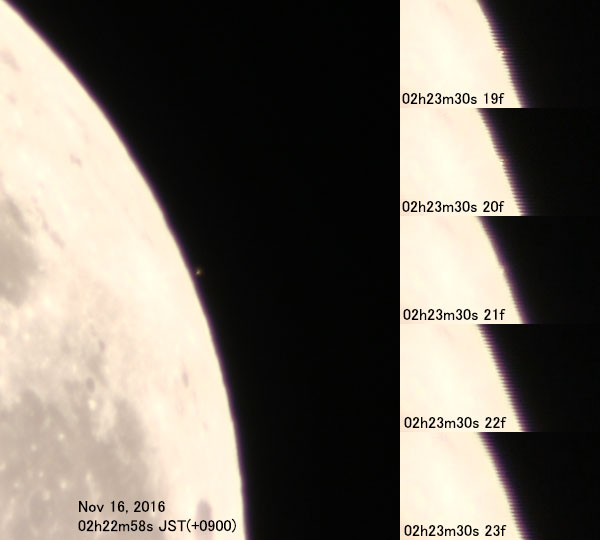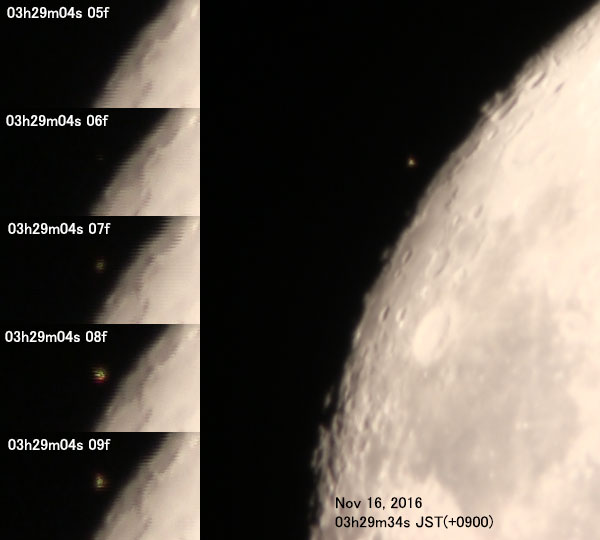

  |
| Date & Time: | Nov 16 2016, Times are displayed in images |
| Optical: | BORG 60ED, afocal method with LV25mm eyepiece (14×) |
| Synthesized focal length f=854mm (equivalent f=6100mm in 35mm film format) | |
| Auto-guided with TAKAHASHI EM-200 Equatorial | |
| Digital Video Camera: | Canon iVIS HF-M41 |
| Location: | Hitachi city, Ibaraki pref. |
| Camera Settings: | Mode...MXP(24Mbps), Aperture value auto |
| Lens...f=61mm (equivalent f=436mm in 35mm film format), Stop: F3.0 |
Saturnian Occultation(Oct 16, 1997) |
Antares Occultation(Mar 31, 2005) |
| Copyright(c) 2016 by Naoyuki Kurita, All rights reserved. | ||
| To top page | To Eclipse index |